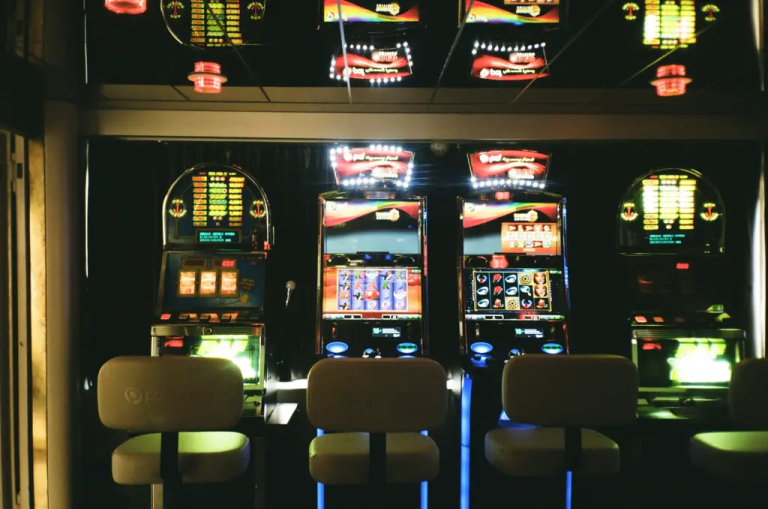Indoor LED Screens: Transforming Indoor Environments

Indoor LED screens have revolutionized the way we display information, advertise, and entertain within enclosed environments. From corporate settings to retail spaces and entertainment venues, these screens offer unparalleled brightness, clarity, and versatility. This article explores the technology behind Indoor LED screen the key manufacturers, their applications, market dynamics, and future trends.
Understanding Indoor LED Screen Technology
Indoor LED screens utilize light-emitting diodes (LEDs) to produce bright and vivid displays. The technology behind these screens involves several critical components:
- LED Chips: These are the primary light sources in the screens, available in various colors and configurations.
- Modules: Multiple LED chips are arranged into modules that can be combined to create larger displays.
- Driver ICs: These integrated circuits control the current flowing through the LEDs, ensuring consistent brightness and color accuracy.
- Power Supply: Efficient power supplies are essential to manage the energy consumption of LED screens.
- Control Systems: Advanced hardware and software systems that manage the input signals and control the display output.
Key Features of Indoor LED Screens
- High Resolution: Indoor LED screens offer high pixel density, ensuring clear and sharp images, even from close viewing distances.
- Brightness and Contrast: They provide superior brightness and contrast levels, making them suitable for environments with varying lighting conditions.
- Wide Viewing Angles: These screens are designed to be viewed from different angles without loss of image quality.
- Flexibility in Size and Shape: Indoor LED screens can be customized in terms of size and shape to fit specific installation requirements.
- Durability and Longevity: Built to last, they offer extended operational life with minimal maintenance.
Leading Indoor LED Screen Manufacturers
Several companies have distinguished themselves in the indoor LED screen market, offering innovative solutions and high-quality products.
1. Samsung Electronics
Samsung is a prominent player in the LED display market, known for its high-definition indoor LED screens. Samsung’s products are widely used in corporate settings, retail environments, and control rooms, providing exceptional picture quality and reliability.
2. LG Electronics
LG Electronics offers a range of indoor LED screens that are renowned for their brightness, color accuracy, and energy efficiency. LG’s solutions are popular in various sectors, including advertising, hospitality, and education.
3. Leyard Optoelectronic
Leyard is a leading manufacturer specializing in both indoor and outdoor LED displays. Their indoor LED screens are known for high resolution, seamless splicing, and excellent visual performance, making them ideal for control rooms, broadcast studios, and high-end retail displays.
4. Unilumin
Unilumin is a top-tier LED display manufacturer, offering a diverse range of indoor LED screens. Their products are characterized by high pixel density, excellent color consistency, and robust construction, suitable for various applications from conference rooms to entertainment venues.
5. Absen
Absen is a global leader in LED display solutions, providing high-quality indoor LED screens for multiple applications. Absen’s screens are known for their innovative designs, easy installation, and superior visual performance.
Applications of Indoor LED Screens
Indoor LED screens are used in a wide array of applications, enhancing visual communication and engagement.
1. Corporate and Conference Rooms
In corporate environments, indoor LED screens are used for presentations, video conferencing, and digital signage. Their high resolution and brightness ensure clear visibility, enhancing communication and collaboration.
2. Retail and Shopping Malls
Retail stores and shopping malls use indoor LED screens to display advertisements, promotions, and interactive content. These screens attract customers and enhance the shopping experience.
3. Broadcast and Media
Broadcast studios and media houses utilize indoor LED screens for live broadcasts, background displays, and virtual sets. The high-quality visuals provided by these screens are crucial for professional-grade productions.
4. Education and Training
Educational institutions use indoor LED screens in classrooms, lecture halls, and auditoriums for teaching, presentations, and information dissemination. The clarity and flexibility of these screens support various educational activities.
5. Entertainment and Hospitality
Indoor LED screens are widely used in theaters, concert halls, and hotels to provide entertainment, advertisements, and information. Their ability to display dynamic content enhances the guest experience.
6. Control Rooms and Command Centers
In control rooms and command centers, indoor LED screens display critical information, real-time data, and video feeds. Their reliability and high resolution are essential for effective monitoring and decision-making.
Market Dynamics and Trends
The market for indoor LED screens is dynamic and influenced by several key trends:
1. Rising Demand for High-Resolution Displays
As consumer and business expectations for high-quality visuals increase, the demand for high-resolution indoor LED screens is growing. Manufacturers are focusing on producing screens with higher pixel densities to meet this demand.
2. Advancements in LED Technology
Continuous advancements in LED technology are improving the performance and reducing the costs of indoor LED screens. Innovations such as MicroLED and MiniLED are enhancing brightness, contrast, and energy efficiency.
3. Increased Adoption in Retail and Corporate Sectors
The retail and corporate sectors are increasingly adopting indoor LED screens for advertising and communication. These sectors appreciate the flexibility, clarity, and engagement potential offered by LED screens.
4. Integration with Smart Technologies
Integration with smart technologies, including IoT and AI, is enhancing the capabilities of indoor LED screens. Features such as remote monitoring, predictive maintenance, and interactive displays are becoming more common.
5. Cost Reduction
As production techniques improve and economies of scale are achieved, the costs of indoor LED screens are decreasing. This makes them more accessible to a broader range of users and applications.
Challenges in the Indoor LED Screen Market
Despite the positive trends, the market faces several challenges:
1. Technological Complexity
The production of high-quality indoor LED screens involves complex technologies and processes. Manufacturers must invest in research and development to stay competitive and meet evolving market demands.
2. Supply Chain Management
Ensuring a consistent supply of high-quality components is crucial. Disruptions in the supply chain, whether due to geopolitical factors or material shortages, can impact production timelines and costs.
3. Quality Control
Maintaining stringent quality control standards is essential to deliver reliable and durable indoor LED screens. Robust testing and inspection protocols are necessary to identify and address defects or inconsistencies.
4. Environmental Regulations
Compliance with environmental regulations and standards is a growing concern. Manufacturers need to invest in sustainable practices and technologies to adhere to these regulations.
The Future of Indoor LED Screens
The future of indoor LED screens looks promising, with several exciting developments on the horizon:
1. MicroLED and MiniLED Technologies
MicroLED and MiniLED technologies represent the next frontier in LED display innovation, offering significant improvements in brightness, contrast, and energy efficiency. These technologies are ideal for high-end applications.
2. Flexible and Transparent Displays
The development of flexible and transparent LED displays is opening new possibilities for design and functionality. These screens can be integrated into various surfaces and environments, from curved architectural elements to transparent windows.
3. Advancements in AR and VR
LED screens play a crucial role in the advancement of augmented reality (AR) and virtual reality (VR) technologies. High-resolution, immersive displays are essential for creating realistic and engaging virtual experiences.
4. AI and Machine Learning Integration
The integration of AI and machine learning into LED screen technology is enhancing capabilities such as content optimization, predictive maintenance, and user interaction. These advancements are driving innovation and improving overall performance.
5. Global Market Expansion
As indoor LED screen technology becomes more affordable and versatile, its adoption is expected to increase globally. Emerging markets in Asia, Africa, and Latin America are poised for significant growth, offering new opportunities for manufacturers.
Conclusion
Indoor LED screens have transformed the way we communicate and display information in enclosed environments. With advancements in technology, innovative designs, and a growing range of applications, these screens are set to play an increasingly important role in various sectors. Chinese manufacturers, in particular, are leading the charge, providing high-quality, cost-effective solutions that meet the demands of a global market. As technology continues to evolve, the future of indoor LED screens promises even more exciting developments, ensuring their place at the forefront of visual technology.




